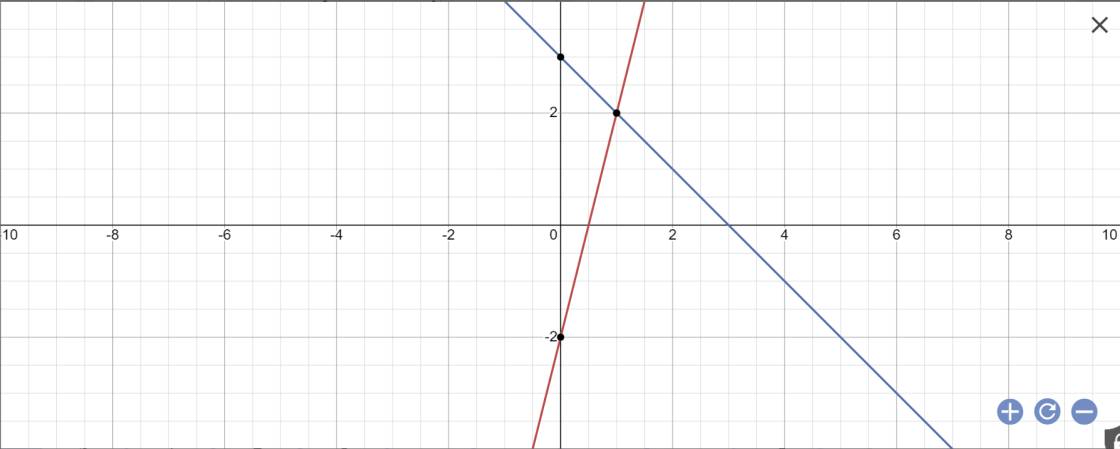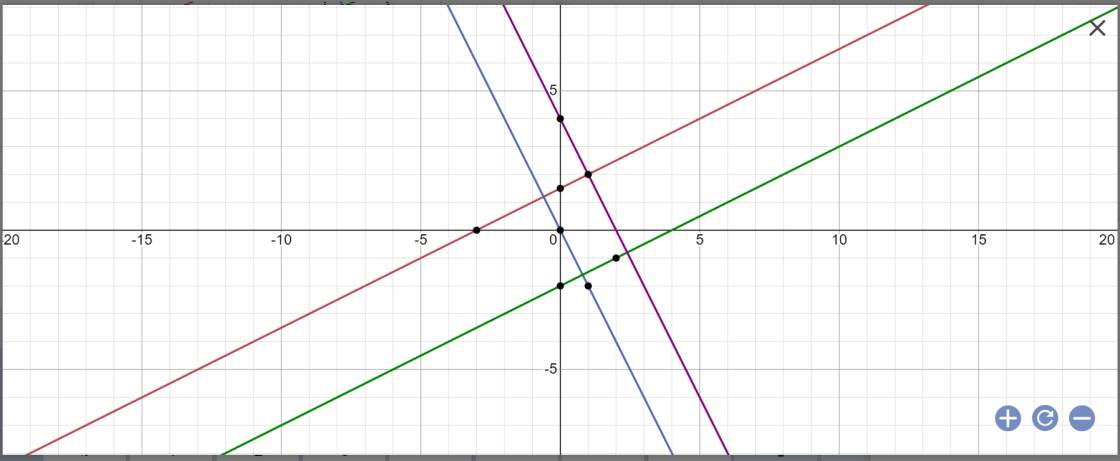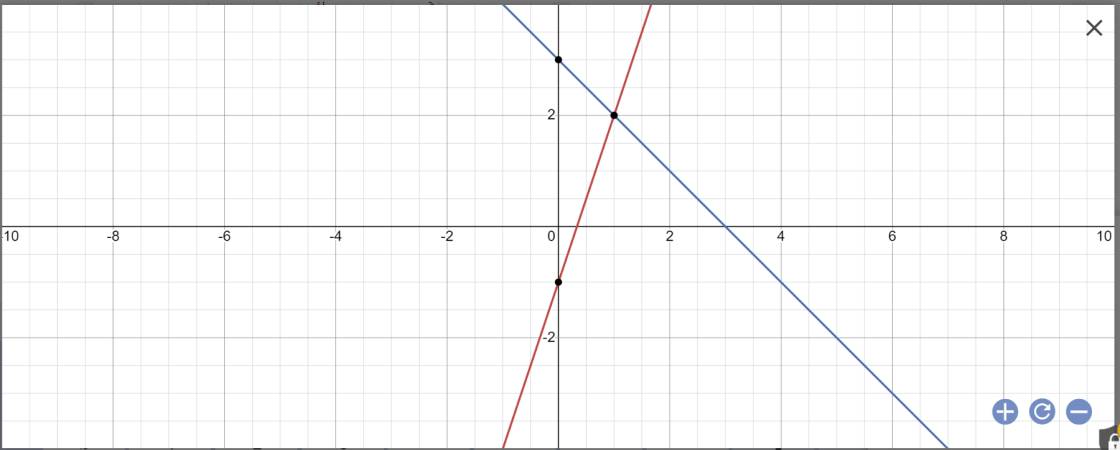Cho hàm số y = 2x + 2 ( d1)
y = \(-\dfrac{1}{2}\) x - 2 (d2)
a ) Vẽ đồ thị của hai hàm số đã cho trên cùng mặt phẳng Oxy
b ) Gọi giao điểm (d1) với Oy là A giao điểm (d2) với Ox là B, còn giao điểm (d1) và (d2) là C. Tam giác ABC là tam giác gì ? Tìm tọa độ A, B, C
c ) Tìm diện tích tam giác ABC















